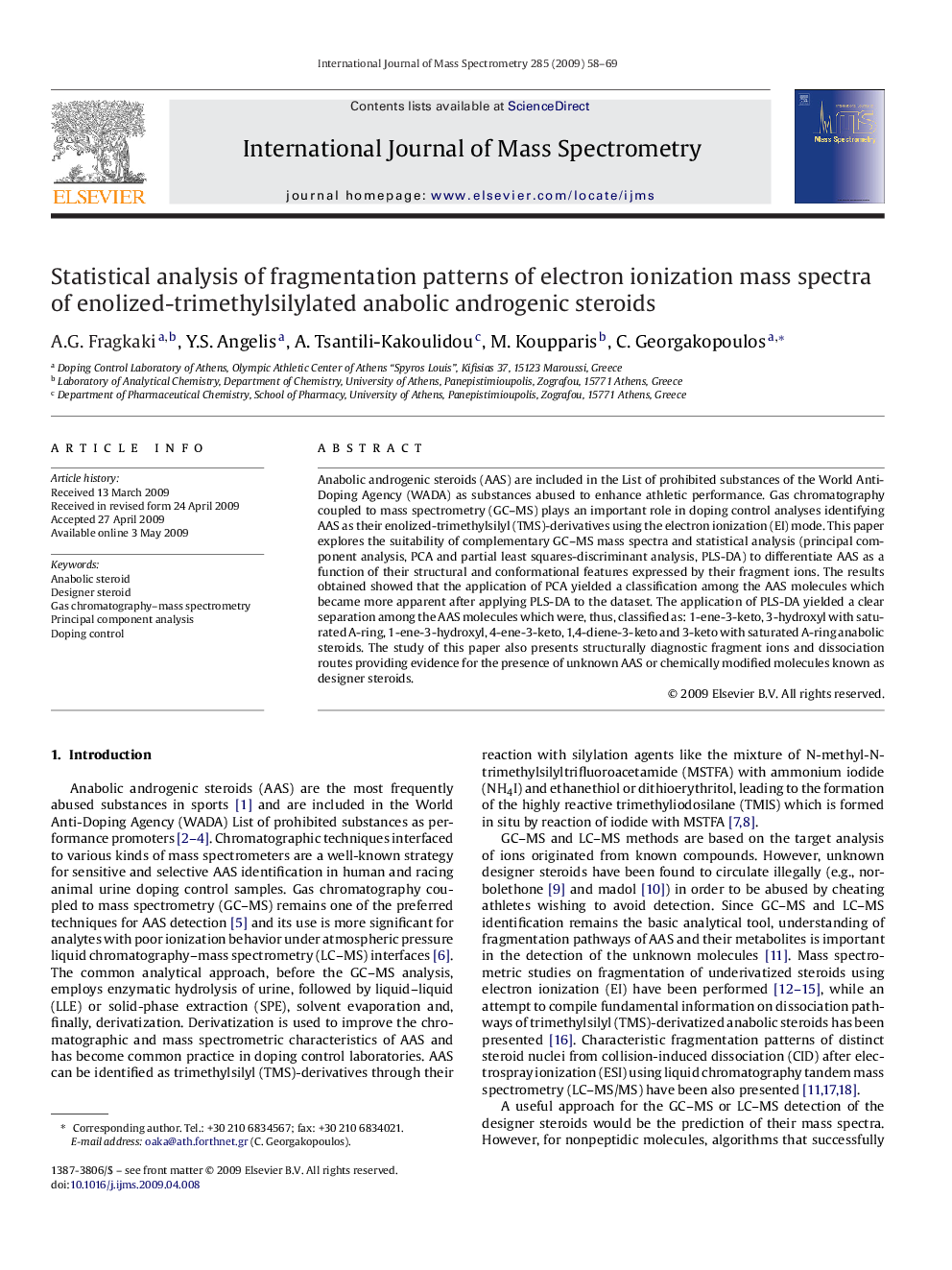| Article ID | Journal | Published Year | Pages | File Type |
|---|---|---|---|---|
| 1193667 | International Journal of Mass Spectrometry | 2009 | 12 Pages |
Anabolic androgenic steroids (AAS) are included in the List of prohibited substances of the World Anti-Doping Agency (WADA) as substances abused to enhance athletic performance. Gas chromatography coupled to mass spectrometry (GC–MS) plays an important role in doping control analyses identifying AAS as their enolized-trimethylsilyl (TMS)-derivatives using the electron ionization (EI) mode. This paper explores the suitability of complementary GC–MS mass spectra and statistical analysis (principal component analysis, PCA and partial least squares-discriminant analysis, PLS-DA) to differentiate AAS as a function of their structural and conformational features expressed by their fragment ions. The results obtained showed that the application of PCA yielded a classification among the AAS molecules which became more apparent after applying PLS-DA to the dataset. The application of PLS-DA yielded a clear separation among the AAS molecules which were, thus, classified as: 1-ene-3-keto, 3-hydroxyl with saturated A-ring, 1-ene-3-hydroxyl, 4-ene-3-keto, 1,4-diene-3-keto and 3-keto with saturated A-ring anabolic steroids. The study of this paper also presents structurally diagnostic fragment ions and dissociation routes providing evidence for the presence of unknown AAS or chemically modified molecules known as designer steroids.
Graphical abstractThe suitability of complementary GC–MS mass spectra and statistical analysis (principal component analysis, PCA and partial least squares-discriminant analysis, PLS-DA) to differentiate trimethylsilylated- (TMS-) derivatives of anabolic androgenic steroids (AAS), as a function of their structural and conformational features expressed by their fragment ions, is explored.Figure optionsDownload full-size imageDownload as PowerPoint slide
